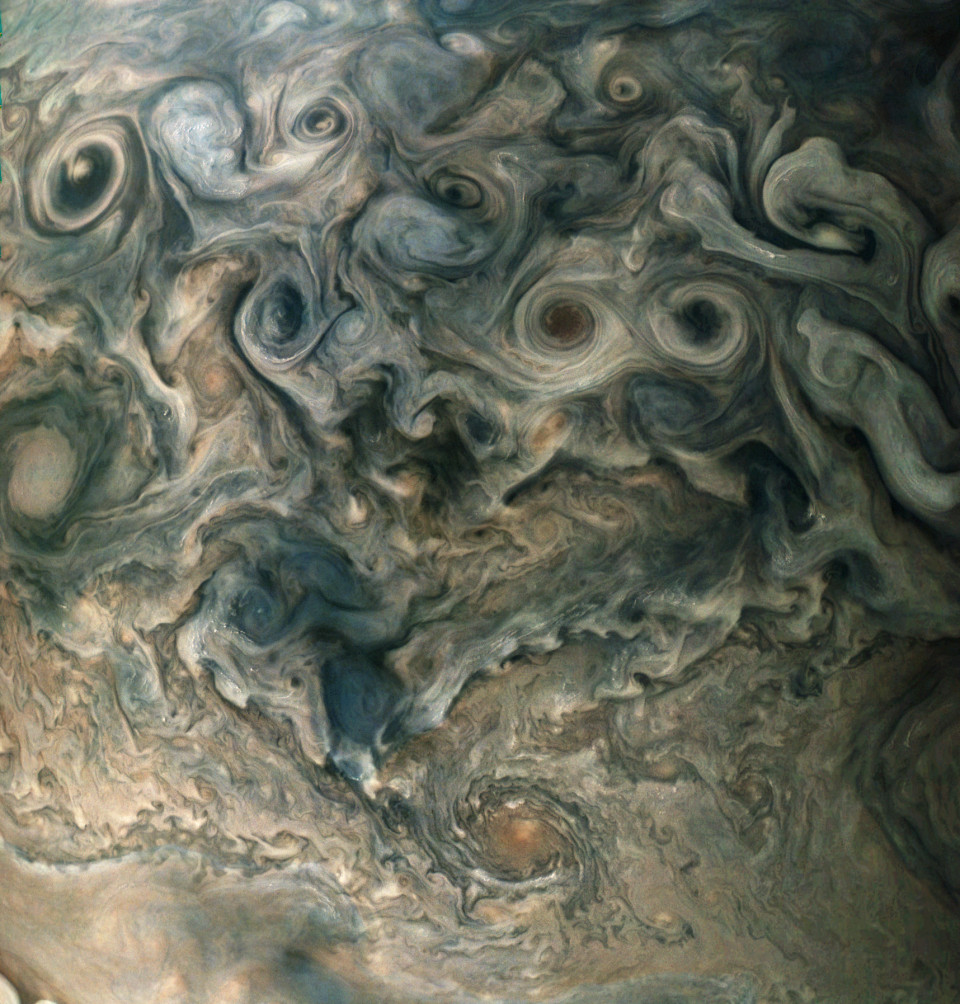
During Perijove-05 approach, JunoCam took one RGB image each half an hour. Since Jupiter rotates once each about 10 hours, a sequence of 20 JunoCam approach images covers one Jupiter rotation. Currently, there is winter on Jupiter's northern hemisphere. This leaves the north pole in the dark. The merged deLambertianed polar projections of such a 20 images sequence therefore leave a dark spot around the north pole. DeLambertianing is a crude method to adjust for brightness variations induced by the solar incidence angle varying over the illuminated surface of Jupiter. Jupiter's twilight zone is brighter than this simple model predicts. This results in an overenhancement of the twilight zone. The merged polar map covers 20 such overenhanced twilight zones, summing up to a nice spiral pattern, as Juno's perspective grows more and more north polar during approach.


enhanced images


At Jupiter’s poles, Juno has observed oval-shaped features, powerful cyclones which measure up to nearly 900 miles wide, according to one of the studies in Science. The finding isn’t surprising, given how good Jupiter is at producing storms. The planet is home to winds blowing at several hundred miles per hour, and storms the size of Earth. But scientists hadn’t observed storms like this at Jupiter’s poles until Juno showed up. They were surprised by the number of cyclonic storms they observed, as well as the differences in the weather patterns on the south and north poles.
“That’s a puzzle to us,” Scott Bolton, Juno’s principal investigator, told reporters Thursday.
Juno’s observations also reveal that Jupiter’s magnetic field is about twice as strong as models previously predicted, according to the same Science study, making it about 10 times the size of Earth’s.

Jupiter Is Much Stranger Than Scientists Thought
JunoCam : Processing | Mission Juno
Last edited:





 giant gas ball with 90 mph cyclone winds..whole place probably smells like hot farts. #Neptune set >>>
giant gas ball with 90 mph cyclone winds..whole place probably smells like hot farts. #Neptune set >>>


